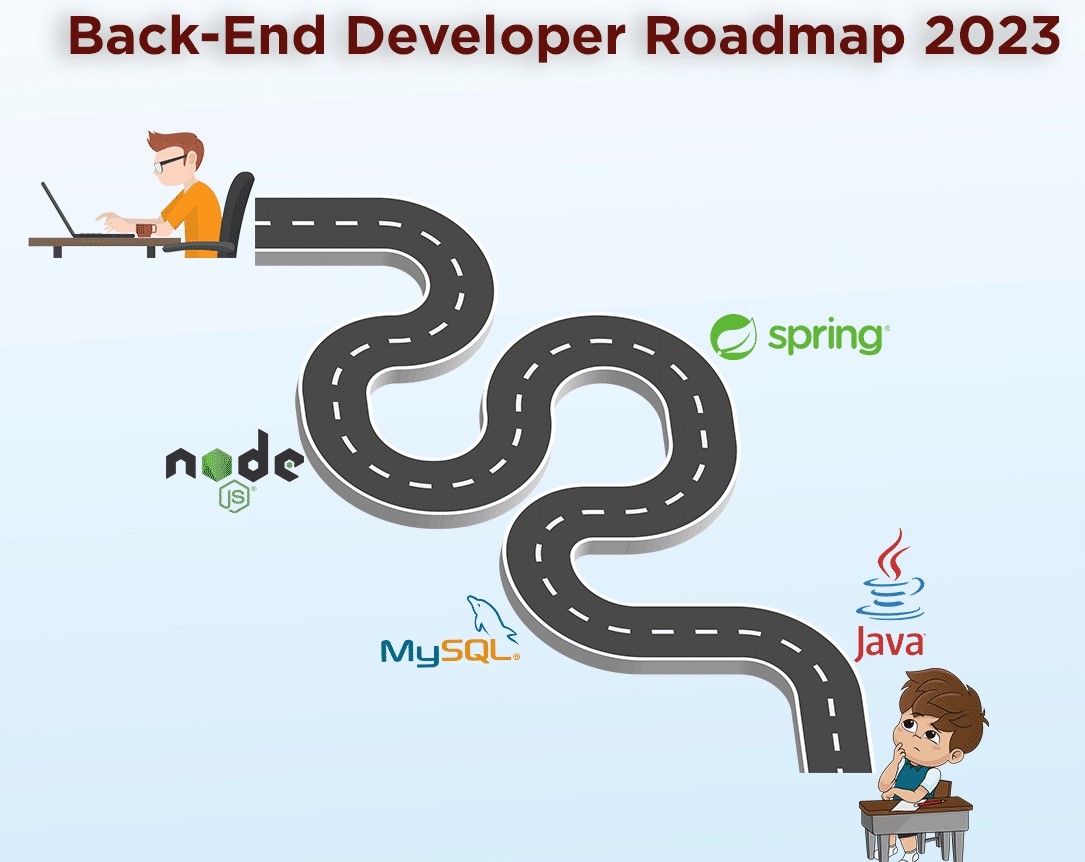The Complete Backend Developer Roadmap: Navigating the Path to Master Web Development
Introduction
Backend development plays a critical role in web development, powering the functionality and logic behind the scenes. As a backend developer, you are responsible for creating robust server-side applications, designing databases, and integrating systems to ensure seamless data flow and efficient performance. Whether you’re embarking on a new journey or aiming to enhance your skills, having a roadmap can provide you with a clear path and help you navigate the expansive landscape of backend development. In this blog post, we’ll outline a comprehensive backend developer roadmap that covers the key skills, technologies, and concepts you need to master to become a proficient backend developer.
Programming Languages
Mastering a backend programming language is essential. Choose a language like Python, JavaScript (Node.js), Ruby, or PHP and gain a solid understanding of its syntax, data structures, and object-oriented principles. Learn about file operations, exception handling, and modular programming to build a strong foundation.
Databases
Databases are the backbone of most applications, and as a backend developer, you’ll need to work with them extensively. Familiarize yourself with relational databases such as MySQL or PostgreSQL, and NoSQL databases like MongoDB or Redis. Learn how to design efficient database schemas, write optimized queries, and understand database normalization concepts.
Web Frameworks
Web frameworks provide a structured approach to backend development, simplifying the process and increasing productivity. Explore popular frameworks like Django (Python), Express.js (Node.js), Ruby on Rails, or Laravel (PHP). Understand the core concepts, routing mechanisms, middleware, and templating engines used in these frameworks to build scalable and maintainable web applications.
API Development and Integration
Learn how to design and develop APIs (Application Programming Interfaces) to facilitate communication between different components of an application or between multiple applications. Understand RESTful principles, HTTP methods, and serialization formats like JSON or XML. Explore tools like Postman or Insomnia for testing and documentation.
Authentication and Authorization
Securing your applications is paramount. Dive into concepts such as authentication and authorization. Learn about techniques like password hashing, token-based authentication (JWT), OAuth, and role-based access control (RBAC) to protect your resources and manage user permissions effectively.
Caching and Performance Optimization
Optimizing the performance of your backend systems is crucial for delivering a seamless user experience. Learn about caching mechanisms to reduce response times and enhance scalability. Understand concepts like Redis caching, content delivery networks (CDNs), and database indexing techniques to optimize data retrieval.
Testing and Debugging
Ensure the reliability and stability of your backend code through comprehensive testing and effective debugging. Learn about unit testing frameworks such as PyTest (Python), Mocha/Chai (JavaScript), or PHPUnit (PHP). Explore debugging tools and techniques to identify and fix issues efficiently, ensuring the smooth functioning of your applications.
Scalability and Load Balancing
As your applications grow, it’s essential to understand scalability and load balancing concepts. Learn about horizontal scaling, vertical scaling, and load balancing strategies to handle increased traffic and ensure high availability. Familiarize yourself with technologies like Docker and Kubernetes for containerization and orchestration.
Security Best Practices
Develop a deep understanding of web application security to protect your applications from vulnerabilities and attacks. Learn about common security threats, such as cross-site scripting (XSS), cross-site request forgery (CSRF), and SQL injection. Stay updated with security best practices and frameworks like OWASP Top 10 to implement robust security measures.
Continuous Learning
Backend development is a rapidly evolving field, with new technologies and frameworks emerging constantly. Stay up to date with industry trends, follow relevant blogs and forums, join developer communities, and attend conferences or webinars to continuously expand your knowledge and skills.
Conclusion
Mastering backend development requires dedication, continuous learning, and hands-on practice. By following this roadmap and mastering the foundational skills, technologies, and concepts outlined above, you’ll be well-equipped to build powerful, secure, and scalable server-side applications. Remember, the journey may seem challenging at times, but with perseverance and a passion for learning, you’ll thrive in the dynamic and ever-evolving world of backend development. Happy coding!

